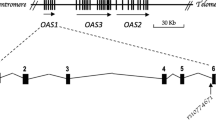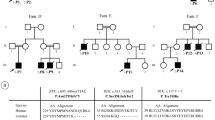Abstract
The distribution of genetic variants associated with natural resistance to viral infections can vary among human ethnic groups due to evolutionary factors, defining the different epidemiologic background of world populations. The polymorphisms, defining the natural resistance to HIV-infection and the rate of progression up to AIDS, are very important since epidemic is still on rise. We have studied the distribution of allele and genotype frequencies of CCR5delta32 mutation in major populations inhabiting Chelyabinsk region of the Russian Federation. Genetic survey included the population of 509 potential blood marrow donors: Russians (N = 300), Bashkirs (N = 118) and Tatars (N = 91). The genotyping assay was performed using real-time polymerase chain reaction (real-time PCR). The genotypes were defined by melting curve analysis. The CCR5delta32 allele and CCR5delta32/delta32 genotype are presented in population of Russians in Chelyabinsk region with the frequencies of F x = 10.83% and P x = 1.67, for the CCR5delta32 allele and its homozygosity, respectively. In populations of Bashkirs and Tatars CCR5delta32 allele and CCR5delta32/delta32 genotype are presented at lower frequencies of F x = 6.36%/P x = 0.85 and F x = 7.14%/P x = 1.10, respectively. These data are consistent with the theory of northern origin of the CCR5delta32 mutation.
Similar content being viewed by others
References
Aseev MV, Shawi A, Baranov VS et al (1997) Population Frequencies of the CKR5 mutant allele of the chemokine receptor gene responsible for HIV infection (article in Russian). Genetica 33:1724–1726
Bogunia-Kubik K, Jaskula E, Lange A (2007) The presence of functional CCR5 and EBV reactivation after allogeneic haematopoietic stem cell transplantation. Bone Marrow Transplant 40:145–150
Bogunia-Kubik K, Mizia S, Gronkowska A et al (2015) CCR5 gene polymorphism affects the risk of GvHD after haematopoietic stem cell transplantation from an unrelated donor. Br J Haematol 171:285–288
Borinskaya SA, Kozhekbaeva ZhM, Zalesov AV et al (2012) Risk of HIV infection and lethality are decreased in CCR5del32 heterozygotes: focus nosocomial infection study and meta-analysis. Acta Nat 4:36–46
Central Research Institute of Epidemiology of Rospotrebnadzor (2016) HIV infection in the Russian Federation on 31 December 2015. Available via DIALOG. http://spid-vich.info/he/node/506. Accessed 13 June 2016
Dean M, Carrington M, Winkler C et al (1996) Genetic restriction of HIV-1 infection and progression to AIDS by a deletion allele of the CKR5 structural gene. Hemophilia Growth and Development Study, Multicenter AIDS Cohort Study, Multicenter Hemophilia Cohort Study, San Francisco City Cohort, ALIVE Study. Science 273:1856–1862
Duarte RF, Salgado M, Sánchez-Ortega I et al (2015) CCR5 Δ32 homozygous cord blood allogeneic transplantation in a patient with HIV: a case report. Lancet HIV 2:e236–e242
Hammer SM, Saag MS, Schechter M et al (2006) Treatment for adult HIV infection: 2006 recommendations of the International AIDS Society-USA panel. Top HIV Med 14:827–843
Hütter G, Schneider T, Thiel E (2009) Transplantation of selected or transgenic blood stem cells—a future treatment for HIV/AIDS? J Int AIDS Soc 12:10
Jagodzinski PP, Lecybyl R, Ignacak M et al (2000) Distribution of 32 alelle of the CCR5 gene in the population of Poland. J Hum Genet 45:271–274
Kalev I, Mikelsaar AV, Beckman L (2000) High frequency of the HIV-1 protective CCR5 Delta 32 deletion in native Estonians. Eur J Epidemiol 16:1107–1109
Keynan Y, Juno J, Meyers A et al (2010) Chemokine receptor 5 Δ32 allele in patients with severe pandemic (H1N1) 2009. Emerg Infect Dis 16:1621–1622
Kindberg E, Mickiene A, Ax C et al (2008) A deletion in the chemokine receptor 5 (CCR5) gene is associated with tickborne encephalitis. J Infect Dis 197:266–269
Kofiadi IA, Rebrikov DV, Trofimov DY et al (2007) Allelic distribution of the CCR5, CCR2, and SDF1 gene polymorphisms associated with HIV-1/AIDS resistance in Russian population (article in Russian). Dokl Biol Sci 415:320–323
Kuritzkes DR (2016) Hematopoietic stem cell transplantation for HIV cure. J Clin Invest 126:432–437
Libert F, Cochaux P, Beckman G et al (1998) The deltaccr5 mutation conferring protection against HIV-1 in Caucasian populations has a single and recent origin in Northeastern Europe. Hum Mol Genet 7:399–406
Lim JK, Murphy PM (2011) Chemokine control of West Nile virus infection. Exp Cell Res 317:569–574
Limborska SA, Balanovsky OP, Balanovskaya EV et al (2002) Analysis of CCR5Delta32 geographic distribution and its correlation with some climatic and geographic factors. Hum Hered 53:49–54
Martinson JJ, Chapman NH, Rees DC et al (1997) Global distribution of the CCR5 gene 32-basepair deletion. Nat Genet 16:100–103
McDermott DH, Conway SE, Wang T et al (2010) Donor and recipient chemokine receptor CCR5 genotype is associated with survival after bone marrow transplantation. Blood 115:2311–2318
Novembre J, Galvani AP, Slatkin M (2005) The geographic spread of the CCR5 Delta32 HIV-resistance allele. PLoS Biol 3:e339
Petz LD, Burnett JC, Li HT et al (2015) Progress toward curing HIV infection with hematopoietic cell transplantation. Stem Cell Cloning 8:109–116
Stephens J, Reich D, Goldstein D et al (1998) Dating the origin of the CCR5-Delta32 AIDS-resistance allele by the coalescence of haplotypes. Am J Hum Genet 62:1507–1515
Su B, Sun G, Lu D et al (2000) Distribution of three HIV-1 resistance-conferring polymorphisms (SDF1-3′A, CCR2-641, and CCR5-delta32) in global populations. Eur J Hum Genet 8:975–979
Yudin NS, Vinogradov SV, Potapova TA et al (1998) Distribution of CCR5-delta 32 gene deletion across the Russian part of Eurasia. Hum Genet 102:695–698
Zare-Bidaki M, Karimi-Googheri M, Hassanshahi G et al (2015) The frequency of CCR5 promoter polymorphisms and CCR5 Δ 32 mutation in Iranian populations. Iran J Basic Med Sci 18:312–316
Author information
Authors and Affiliations
Corresponding author
About this article
Cite this article
Govorovskaya, I., Khromova, E., Suslova, T. et al. The Frequency of CCR5del32 Mutation in Populations of Russians, Tatars and Bashkirs of Chelyabinsk Region, Russia. Arch. Immunol. Ther. Exp. 64 (Suppl 1), 109–112 (2016). https://doi.org/10.1007/s00005-016-0429-3
Received:
Accepted:
Published:
Issue Date:
DOI: https://doi.org/10.1007/s00005-016-0429-3




